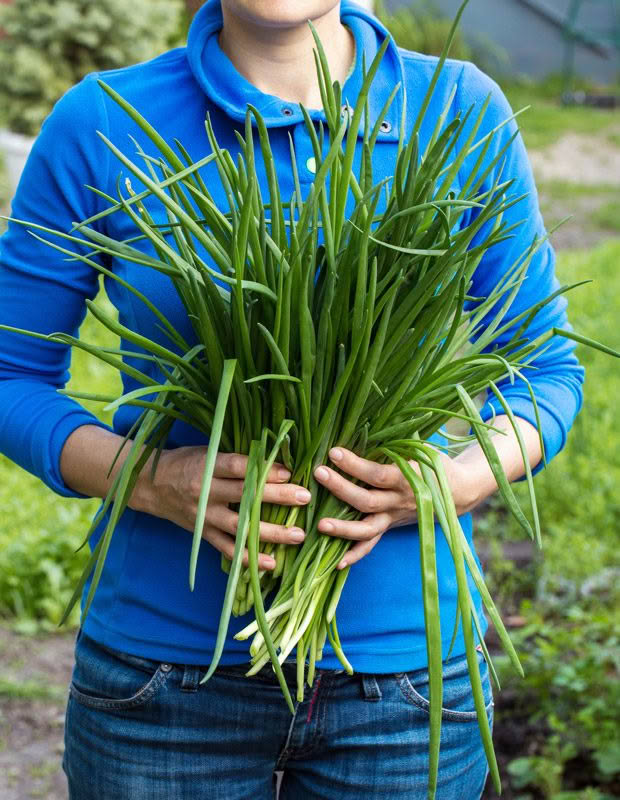Everything to do in the garden this June: Plant cruciferous seedlings, sow winter lettuces

The time has come to get winter-ready — here’s what you need for a continuous supply.
Words: Jane Wrigglesworth
1. Sow spinach, silverbeet, radishes, peas, onions, rocket, and winter lettuces in a sheltered patch, or in large pots.
2. Broad beans can still be sown. Traditionally, they’re planted in double rows, about 50cm apart, running north to south to ensure each plant is exposed to adequate sunlight.’
3. Dig in marigolds. French marigolds (Tagetes patula) have a reputation for repelling nematodes, the tiny roundworms that feed on plant roots.
However, it only works if you plant a suitable number and keep them growing for a certain length of time. If you plant just a smattering of marigolds for a short period or intersperse them in amongst your vegetables, it won’t help.

You need to grow a solid block in the same way as a cover crop – over an entire bed, for example – for a whole season, then dig them into the soil. After that, your soil should remain nematode-free for two to three years.
French marigold blooms are a great treat for poultry. Dried petals added to feed will help to deepen yolk colour. They can also be used to make tea. Put 2 tsp of petals in 230ml of boiling water and steep for 5-10 minutes. Add lemon balm or mint for extra flavour.
4. Plant seedlings of broccoli, cabbage, cauliflower, kale, lettuce, spinach, and silverbeet.

5. Florence fennel is grown as an annual. If you didn’t get time to dig it up in autumn, fresh new feathery fronds may emerge. These can be harvested for winter salads and other dishes.
6. Plant shallots. Shallots can be sown throughout winter in a sunny spot in fertile, compost-enriched soil. Divide shallots into single bulbs and plant each one root-end down. Gently press them into the soil, but leave at least a third poking out. Space 15cm apart in rows 30cm apart. Unlike garlic, which forms a bulb from one clove, shallots form clusters around the original bulb, so they require more space.

Water well after planting, and over winter if the soil is dry. Provide regular moisture in spring and summer. The shallot’s root system is shallow, so plants can’t get water from deep down in the soil.
Feed regularly with a high nitrogen fertiliser. Reduce feeding and watering about four weeks before harvesting. Harvest when the tops wither and turn brown, usually mid-late summer.
7. Build a cold frame to keep your seedlings, cuttings, and tender plants cosy.
They’re simple to make. Firstly find an old window, build a wooden frame to fit that will sit on the ground, and then attach the window frame to the bottom frame using hinges.

An even quicker option is to push stakes into the ground and cover with frost cloth.
8. Bay trees are generally hardy to -5°C, but hard frosts and freezing winds can turn leaves brown. Bring potted plants indoors in cold areas or protect with frost cloth. Any leaf damage can be pruned off in spring.
9. Bare-rooted fruit trees are an economical option if you want to expand your orchard.
Plant out in a sunny, sheltered spot in the garden. Dig a square hole at least twice as big as the roots and mix slow-release fertiliser into the soil you dig out. If your tree is grafted, make sure the graft sits above soil level

Place two stakes either side of the tree, and use flexible ties, so you don’t damage the bark. Backfill with soil, then firm it with your foot to reduce air pockets – don’t compact it though.
If soil is dry, water 15-20 litres after planting, water regularly throughout the first year. If the soil gets dry, give the roots a good, long soaking a couple of times a week, vs small amounts of water each day. Keep mulched in warmer months to conserve moisture.
10. Prune grapevines and take cuttings as you do so. It’s easy: cut just above a bud and 5cm below it. Push the cutting into a pot of seed-raising mix with the bud resting on the soil surface.

Water in and keep in a warm, sheltered, frost-free spot over winter. When roots appear, plant into a larger pot, or in the garden.
11. Basil is a warm-season annual but you can sow seeds in a warm spot indoors and harvest as microgreens for salads and as a garnish for other dishes.
MORE HERE
Love this story? Subscribe now!
 This article first appeared in NZ Lifestyle Block Magazine.
This article first appeared in NZ Lifestyle Block Magazine.
